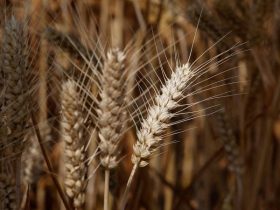Hops in major beer-producing European countries like Germany, Czech Republic and Slovenia are ripening earlier and producing less since 1994, scientists found. And, perhaps most alarmingly for the IPA lovers of the world, they are starting to lose their critical bitter component.
It’s going to get worse, researchers say. Hop yields could decline by as much as 18% by 2050, and their alpha acid content – which makes beer bitter – could decrease by up to 31% due to hotter and drier conditions, according to a study published Tuesday in the journal Nature Communications.
The findings add to a growing list of things the climate crisis threatens yet people take for granted, said Miroslav Trnka, co-author of the study and researcher at the Global Change Research Institute.
“One of the side motives of this study was to illustrate how climate change might be important for even those who think it doesn’t matter,” Trnka told CNN. “We are really seeing changes that are affecting things that we value, like the taste of beer. Climate change really can have an effect on it, or at least have an effect on commodities that are critical for production.”
Beer brewing has been around since at least 3100 BC, the study notes. Now, each of the basic ingredients of today’s beer — water, barley, yeast and hops – are threatened by global warming.
“With climate change affecting a vast number of agricultural crops, I’m not surprised,” said Douglass Miller, a senior lecturer in food and beverage management at Cornell University who is not involved in the study.
“Hops are also finicky plants and there might be some crop failures,” Miller said, which could lead brewers to work with different flavor profiles from other types of hops.
Researchers used weather data and climate models to analyze how European hops have been and will be affected by climate change between 1970 and 2050, assuming precipitation decreases and temperature increases.
Scorching temperatures have already shifted the start of hop growing season by 13 days from 1970 to 2018, according to the study. The growth of new shoots from the hop plant typically occurs during the spring, but since 1995, the researchers found it’s happening earlier in the regions analyzed than years prior.
This early onset triggers earlier harvests, which could make it more difficult for hop growers to schedule harvesting and processing operations.
In recent years, more consumers are preferring beer aromas and flavors that require higher-quality hops, according to the study. Since these hops are only grown in smaller regions, researchers say they’re put at even higher risk from climate change-fueled heat waves and droughts.
“Hop farmers have changed the locations of hop fields in response to changes in temperature and precipitation and that is likely to continue,” said Mark Sorrells, a professor at Cornell University’s School of Integrative Plant Science who is not involved with the study.
And while craft brews with aroma hops may be popular now, consumer preferences could change as growers adapt, Sorrells added.
While this study only focused on major hop-growing European countries – which cover nearly 90% of the total area of aromatic hop fields in the continent – Trnka said it’s also representative of what could happen in beer-producing regions in the US such as the Pacific Northwest, where record-shattering heatwaves are occurring more often than usual.
“They are facing similar problems like European (countries), perhaps a slightly different timing and different frequency but climate change is cumulatively affecting both regions in very similar ways,” Trnka said.
Beer remains one of the world’s most widely consumed beverages. Even in a hotter future, people will still find ways to brew it, Trnka said – but it may not taste the same.
Read the full article here













Leave a Reply